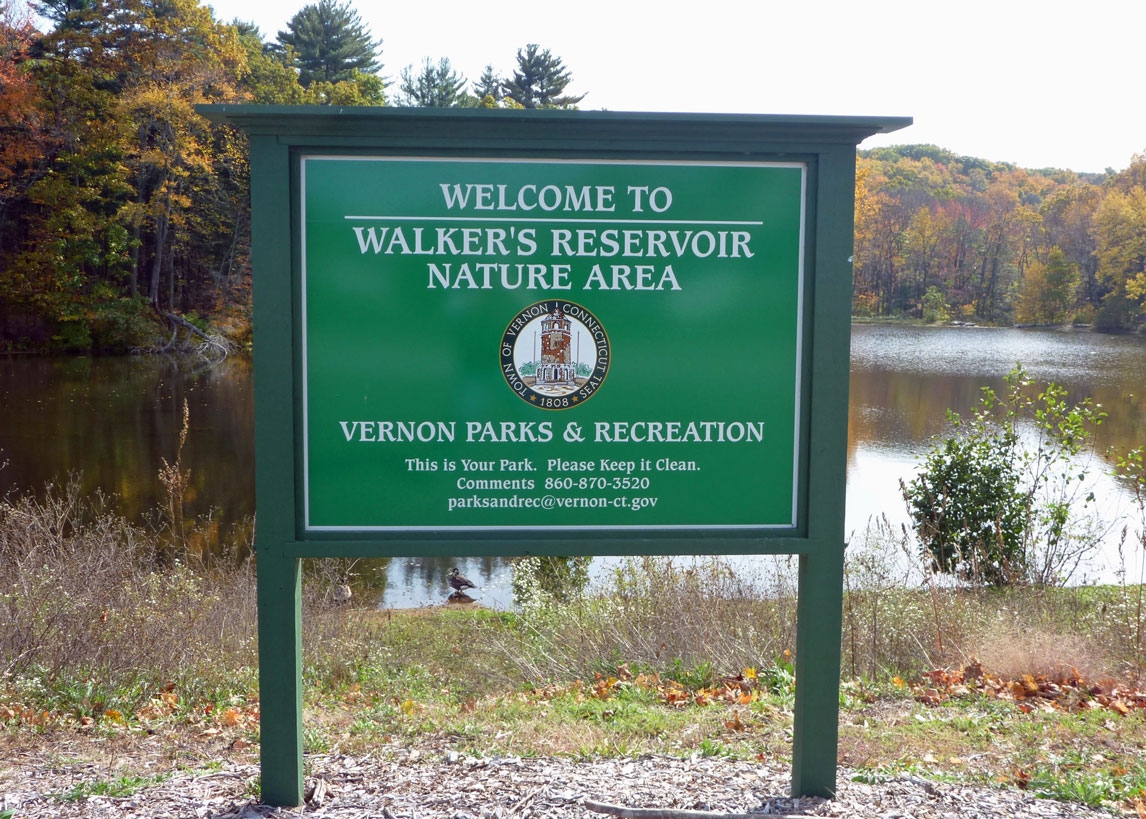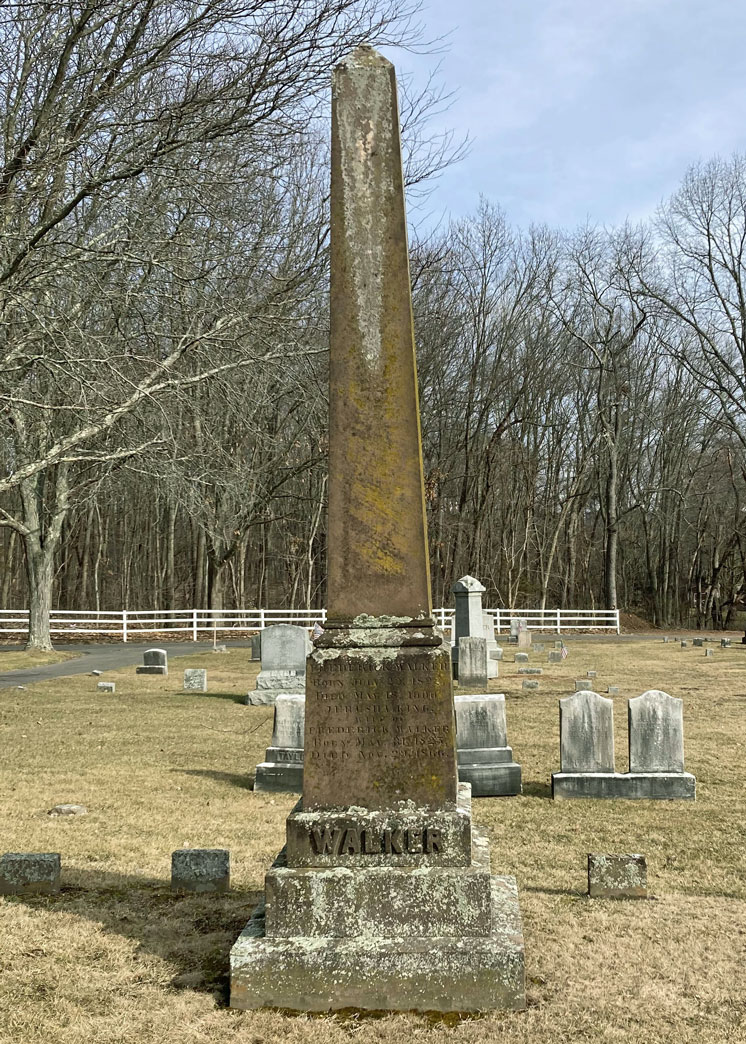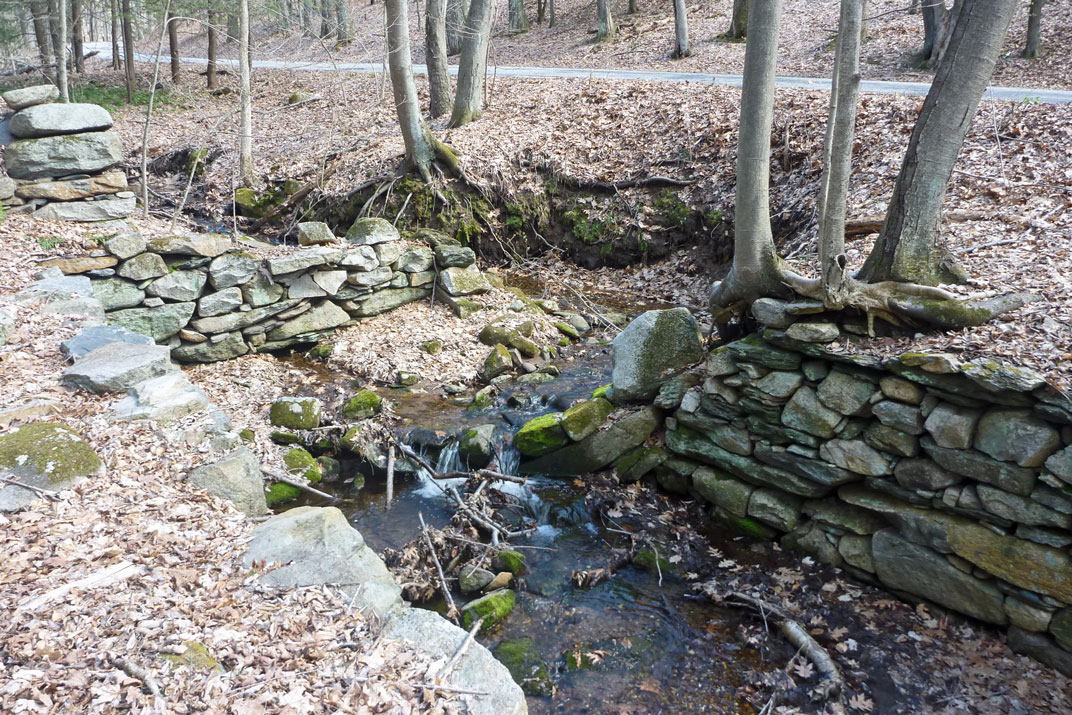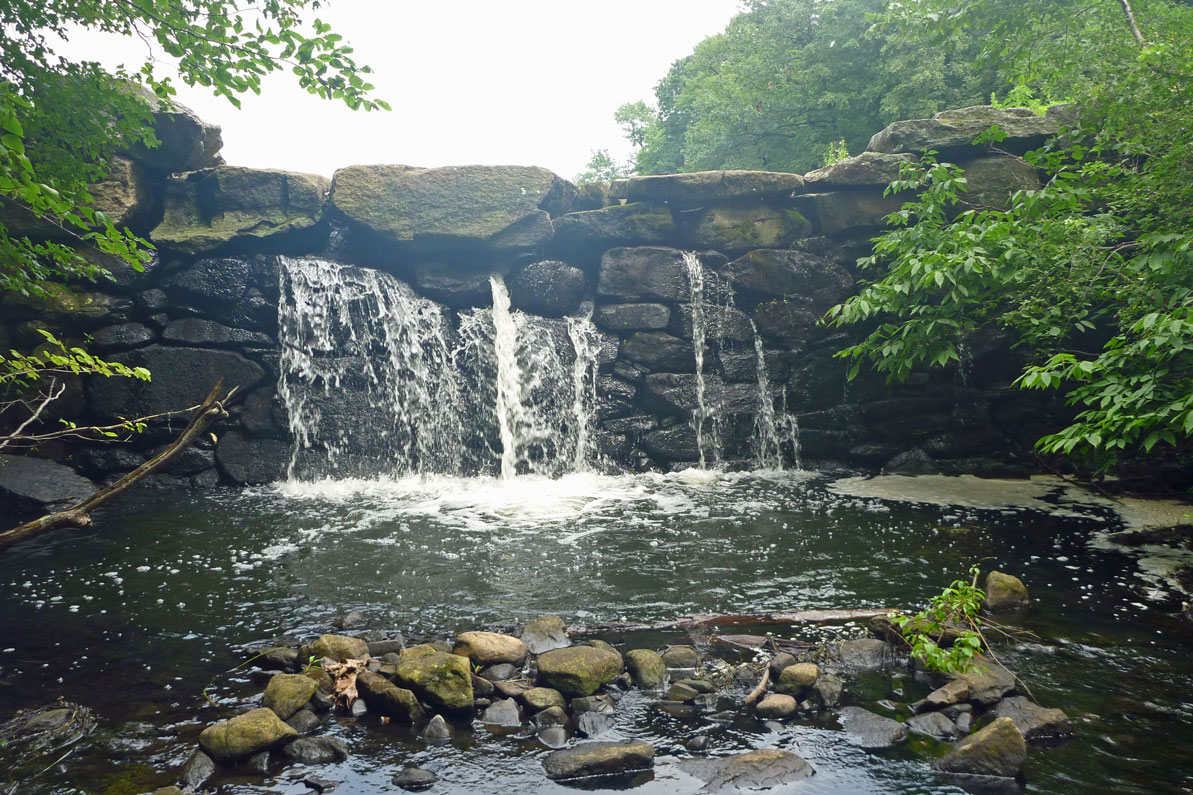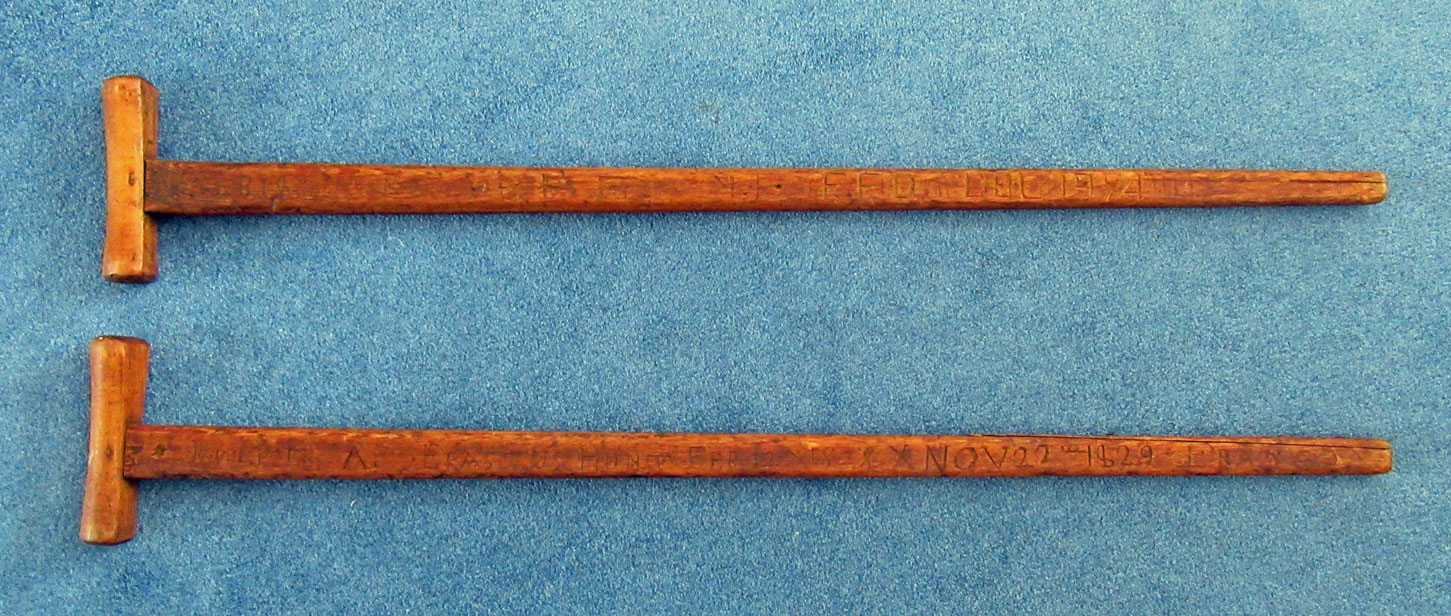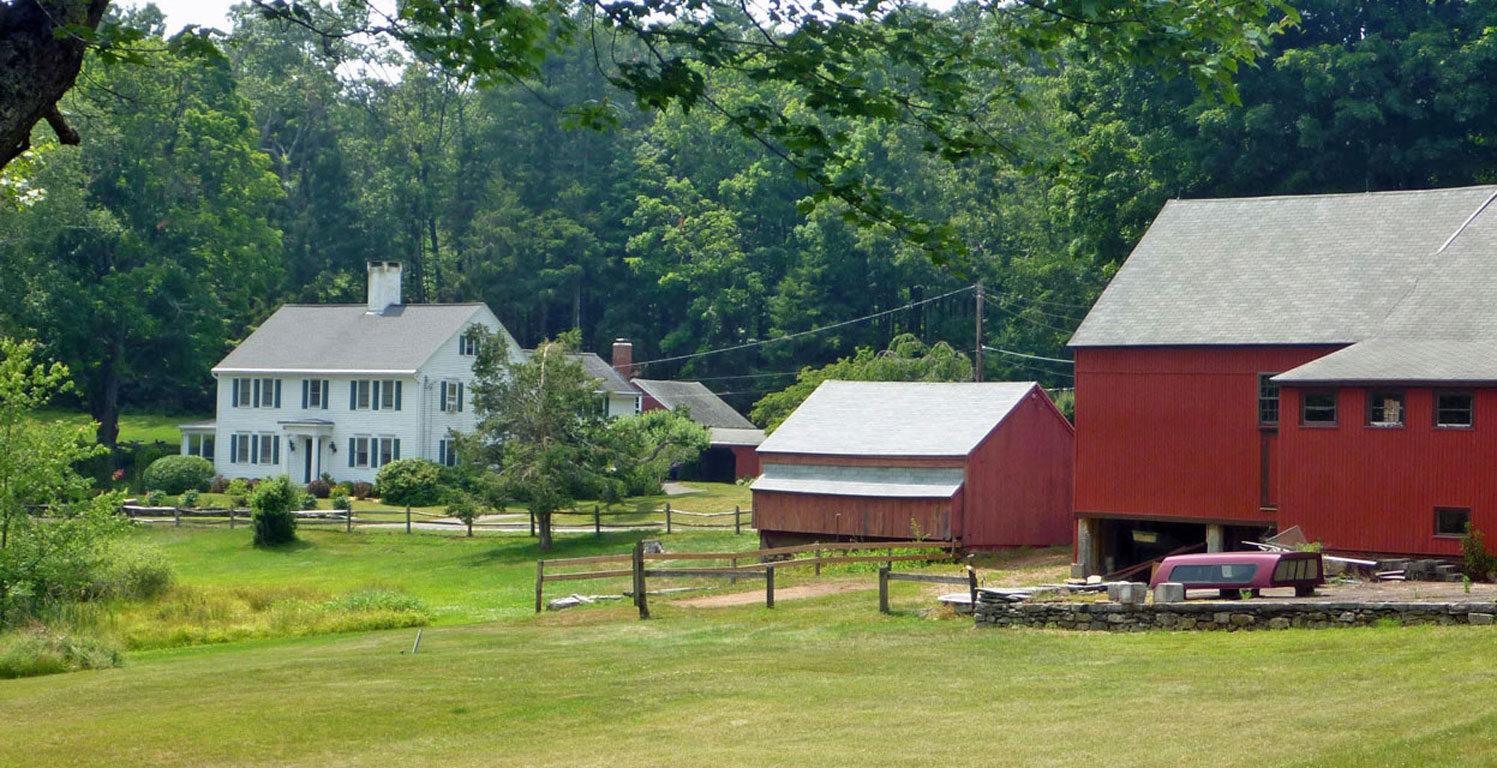 |
| Home | Geography | History | Biology | Recreation | News | Resources |
| Timeline | Narrative | Events | Places | People |
Frederick WalkerFrederick Walker (1822-1900) will be remembered for building Walker's Reservoir and for Walker's Mill on Fish and Game Road. His story is an example of the 19th Century farmers and small mill owners of the time. The Walker Family
John Walker (1732-1802) was the first of this branch of the Walker family to move to North Bolton. Born in Scotland he came to Hartford where he married Marion Morison, the daughter of fellow Scot Dr. Normand Morison. Morison was an influential physician in 18th Century Connecticut who was also involved in the slave trade and acquired a great deal of land in the new state. One of Morison's purchases was 120 acres with houses in the 1740's from the Johns family along Bolton Road and Box Brook, the future site of Valley Falls Park. Morison died in 1761 leaving the Bolton Road property as well as some Hartford property to his daughter Marion and her husband. John and Marion had three children including one son John Walker, Jr. Marion died at the birth of their third child a year later in 1762 leaving all the property to her son John Walker, Jr., who chose his father as his guardian. John Sr. remarried but his second wife died two years later in 1766. Meanwhile John became the Hartford Postmaster, but ran into some legal and financial problems and in 1770 moved to the Bolton farm where he married his third wife Sarah Sloan. They had two sons who both moved to Ohio during the long cold years of 1815-1820 for warmer weather and better farm land. John Walker Jr. (1758-1828) moved to North Bolton at age 12 with his father in 1770. In 1783 at age 25 he married in 1791 Anna King from the large and prominent King family, who had large farms and properties in eastern North Bolton. He prospered and in 1800 was chosen as a representative from Bolton to the CT General Assembly. John and Anna had four children including three sons - Allen Morrison, Roderick and Frederick. He also purchased more properties in the area. Jabez Hunt in a letter on returning to Vernon after many years and visiting old familiar places on returning from Coventry said, "Our route home was through Bolton, by way of the old stone quarries, down through 'the old Walker district', passing the old house which was our home for six years, the place where my father died, at the age of 47, in the year 1837." Note that Jabez Hunt's name is on the crutch discussed below. Frederick Walker, Sr. (1791-1822) was the great grandson of Dr. Morison and was born in North Bolton. He married Ruth Carpenter and they had five children - Jane, Eliza and Frederick. He died very young at 30 leaving three young children - - Jane, Eliza and Frederick. The court appointed Ezekiel Baker, who has no children of his own, as their guardian.When the children's grandfather John, Jr., died just six years after their father the children received the quarter share of their grandfather's estate their father would have received. The estate was valued at $2,370 and included seven parcels including the 83 acre 'Old House' property. Their guardian Ezekiel Baker sold most of this property for them. The Baker Family
Around 1800 the eastern part of North Bolton is dominated a few families - the Kings, Bakers, Hunts, Cadys and Walkers. Until North Bolton Parish becomes Vernon in 1808 and the town moves toward building larger and larger mills local settlers are farmers buying and selling land along the Tolland border and along Bolton and Reservoir Road. They all belong to the Congregational Church attending church on Meetinghouse Hill and their children go to the same small schools. Not surprisingly their families intermarry and most are related in some way. See the paragraph below on the shared crutches as an example of how they supported each other and worked together. Ezekiel Baker (1771-1842), son of Seth Baker, was born over the border in Tolland coming to Vernon about 1800. Over the course of his life he created a large land holding in eastern Vernon buying up neighbor's land as it became available. He may have been a widower but married to Ruth Carpenter Walker, Frederick's mother in ??? ( - 1882) Upon his death in 1842 everything passed to his widow Ruth, who would live another 40 years, and to his adopted son Frederick Walker. She lived with Frederick throughout his life and he considered her his mother. Of interest he leaves his wife 'one half of my slip in the meeting house and half of the horse shed.' Frederick was given the other half. As the early settlers died or fell on hard times Baker bought up their property. Several large tracts such as John Darte's were divided between his heirs, many who no longer lived in Vernon or even in Connecticut. Baker bought from the families of John Talcott, Caleb Talcott, and others. He must have been a successful businessman to have the hard cash for property. Besides being a successful farmer he may also have run a number of mills on the Tankerhoosen River and upper Bolton Lake. Baker died in 1842 at age ?? apparently without children. In his will, dated 1836, he left property for his wife, but the farms and business properties were given in his will to 'my son Frederick Walker.' Among those signing the will was Allyn S. Kellogg the grandson of our first pastor with a strong interest in town history. Walker's Mills
Walker built and operated a number of related mills on today's Fish and Game Road. As they were smaller mills at the time Rockville was becoming an important producer there are no good descriptions or pictures of Walker's mills. What we know comes from maps and deeds plus investigating the remains. The 1853 map, the first detailed Vernon map, shows Walker's Mill with the inlet race branching off the Tankerhoosen River and carrying water to the mill and then back to the river. The inlet race is clearly visible today emanating from just below a small dammed pond. The 1857 map is much the same. The later 1869 map shows a spool shop, saw mill and grist mill at that location. Walker has apparently expanded his operation. The Spool Shop likely has specialty machinery that produces spools of various sizes for the big mills in Rockville. This would pair nicely with the Saw Mill. Norman Strong tells this story about his great grandfather??? Norman Hollister Strong (1857-1911) in his memoirs: "Norman did not get along good in school, so at the age of 15 (about 1872) he went to work for Fred Walker by the month so he could get room and board. His job was a tail sawyer ? one who takes the lumber and slabs and piles them after they come off the saw. At night he would have to shut the gate to the reservoir to build up a head of water for power the next day. He also had to care for the horses and milk the two cows. For supper he was given bread and raw salt pork. He went home on Saturdays to his mother?s cooking. At that time, they live in the house across from the school in Vernon Center. On Monday mornings, he got up and walked to the reservoir, open the gate so the sawyer would have power at 7 a.m." It should be noted that Walker's mills are upstream and across Fish & Game Road from the earlier Allis Saw and Grist Mills that ceased operation in the early 1800's. Walker's guardian Ezekiel Baker did purchase the Allis saw mill in ??? perhaps it was used in place or moved to be next to Walker's other mills. Hunts earlier saw mill was located below the reservoir dam per Frederick's contract. Allis saw mill was below Fish & Game Road. But we don't know where Tom Mason said that Frederick Walker was a chestnut tree farmer.In his book "Water Powered Mill Sites In Vernon, Connecticut" Richard Symonds, Jr describes the site as it is now and notes that "Remnants found and clearly visible include building foundations, wheel pit, head race and tail race." In 1888 the Vernon Creamery Co., located off Vernon Avenue, was incorporated with Frederick Walker as one of the first presidents. The company made butter. Frederick's wife Jerusha died November 29, 1866. Building Walker's Reservoir
Like many young men of the time Frederick looked to growing Rockville and wanted to be more than a farmer. Near his house, on what is today Fish and Game Road, he built saw, oil and spool mills. The spools would be sold to the factories in Rockville. Not directly on the Tankerhoosen River they drew water from a small pond a bit upstream. Meanwhile the three cotton mills far down stream - the Phoenix, Dobson and Kellogg (later Talcott) mills - were growing. The owners of the large mills in Rockville cooperated to control the flow of water from Shenipsit Lake, and the Tankerhoosen mill owners felt it was important to control the flow of their own river. In 1846 they contracted with Frederick Walker, as owner of the land along the upper Tankerhoosen River, to build and maintain a reservoir on his property that would allow them to have some control over the flow of the entire river. Walker, now only in his 20's, was paid $1,250 and would be allowed to use the water for his own mills. Walker had just 5 months to build the dam and have it ready to flow. Ref: Vernon Vol. 5 page, 527.Frederick Walker's FamilyFrederick married Jerusha King in October 1845. Frederick Eugene Walker was born in Nov. 1848 and lived to 93 in 1941. William Clarence (1852-1897, 45) Died in Africa. Harriet E. (1854-1882, 28) m. A.W. Rollings of Manhattan KS - Elmwood. Jennie Louise (1859-1881, 22) Elmwood. The Crutches
In the early 1800's life in Vernon was dangerous as most men worked on the farm or in mills. Accidents were frequent as there was no regulation and product safety was not a priority. There were no hospitals or pharmacies as we know them and country doctors did their best. Most of the people knew each other through their church, as neighbors and the large families frequently intermarried. Working together and helping each other was a necessity as well as a religious mandate. Thus it was that when an early farmer in the Tankerhoosen Valley injured himself he built a simple crutch, probably of oak or chestnut, to support him while he healed. When his neighbor was injured the crutches were passed along from family to family with each carving his or her initials and a date into one leg of the crutches. In the 1920's the Bissell Family purchased the Walker Farm including Walker's homestead on today's Reservoir Road. With the house came an hundred year old pair of crutches and some in the family maintained the tradition. Now, nearly 200 years since they were first used they are under the care of Tom Mason, who is part of the Bissell family. The crutches are of simple design, each with a single 43 inch four-sided 1 x 2 inch leg with a rounded 7 inch cross piece at the top for under the armpit. The corners are nicely rounded. They are joined with a mortise and tenon joint that is secured with a wooden peg through the cross bar and another wooden peg through the top to ensure a tight fit. A 14 inch piece split from the bottom of one crutch and was reattached with a square wooden peg. Two nails were added later. The user would have been fairly short, perhaps 5'4" to 5'6". The names of those who used the crutches and the dates are carved into the sides. Frederick Walker seems to have made regular use of the crutches as the dates 1842, 185? and 1865 are next to his name. Other early names include Erastus and Jabez Hunt and Henry Cady. Walker's FarmFrederick Walker did not only run successful small mills but was also a farmer as were most of the ambitious people of Vernon. In 1870, after the Civil War, at age 48 he would have been having his best years. The 1870 Agricultural Census shows he was one of the more successful Vernon farmers with:
The total value of all farm production was almost $1,000. This is typical of a successful Vernon farmer of the time. He must have employed a fair number of people for both his mills and farm. In the 1870 Census Frederick lists his real estate at $12,000 and personal estate at $9,000. His wife Jerusha died four years earlier. Five children live with him - Alice 23, Eugene, 21, William 16, Harriet, 16 and Jennie, 11. Only Eugene works on the farm, William is a store clerk.
Nearby is George Brigham, a farm laborer and his wife. Walker's mills continued to be in use until he retired. His grist mill is listed in the Rockville Directories until 1891 and his saw mill until 1896. It appears that Walker's mills did not continue beyond his ownership of the property. Selling The FarmIn 1897 Walker sold his farm and mills to Mary Barrows, a neighboring farmer. There were four parcels of at least 100 acres and included mentions of his Saw Mill and Grist Mill which must still be operational. Vernon Vol 32, page 594. His health failing in late 1897 he moved to Matteawan, NY, today part of Beacon, NY, to live with his son F. E. Walker, a photographer. He died there on May 18, 1900 and his body returned to Vernon for burial in Elmwood. Letters To RuthIn 1926 a son of Frederick visited Vernon and wrote two letters to his daughter Ruth. He just signed them 'Papa.' He described visiting the Reservoir and old farm. The letters were given to Tom Mason by a Walker researcher. The first letter dated July 16, 1926 says, "Monday we went to the old place. One of the Barrows sons and his wife are now living there. Mr. Barrows Sr. and Mrs. Barrows died recently, he was 87 years old. One son who had lived with them was very dissipated and liked to take joy rides better than to work and keep up the place, and he also was dead. The son we saw came from Boston to take care of the old folks." "He (Mr Barrows Sr.) had sold off a great deal of the land and was too feeble to work the rest of it. So the place had grown up to bushes and vines." The second letter is dated August 22, 1926. He apologized for not describing his visit in more detail. He apparently brought his own son he calls just 'F.' to Vernon to show him where he grew up. "Monday went to Walkers Reservoir and the old farm. We found that both Mr. and Mrs. Barret were dead, also a worthless son dead. All had died within 3 or four years. Mr. Barret was 88 years old. He had done what work he could on the farm as long as he was able, but for the last 3 years of his life was bed ridden and had to have 2 nurses to care for him. The son at home had spent his time getting drunk and joy riding in his car, and the old folks had lived on their money as long as it held out, and before they died sent for another son who was living in or near Boston to come home. We saw that son, and he took us into the house. A part of the farm, that which was the most valuable for raising crop, had been sold. The reservoir and water privilege had been sold to the Talcottville Co. in the South Western part of Town of Vernon." "The saw and grist mill all gone and so grown up to brush, vines, and briers that we couldn't see where it used to be. The whole of the place which was not sold was grown up to bushes and everything run down. The son who is living there now is a good man, but in poor health as is also his wife. I felt sorry for them. Then we went to an old burying ground and showed F. his great grandfather's grave; also his great great grandfather's grave and other points of interest." "F. now says he wants me to buy what is left of the old farm. It would make a good garden truck farm, as some of the land slopes to the S. E. and is protected by the woods from the N. & W. winds. Also dandy soil. Many things in Rockville, Hartford and N.Y. City were the same as they used to be. Some things changed. Mama will write to you later in week." A Personal SynchronicityCue the theme music from Twilight Zone. The writer gave his address as 90 Madison Street, Newton, NJ. Frederick, Jr. (1908-1990), our Frederick's grandson was in 1900 living in Fishkill, NY where his children were born there. In 1915 he was in Beacon, NY. Remember that our Frederick spent his last years in Beacon, NY with his son. By 1920 Frderick, Jr had moved to Newton, NJ. The 1920 Census puts him at 20 Madison Avenue and the 1930 Census at 90 Madison Avenue in Newton. Interesting that he came back to Vernon to be buried. Alice Walker (1846-1905) is at top of stone. At the time of the letter my grandfather, Claud Depew, owned a grocery in Newton, NJ and lived just several blocks from Walker. My mother would have been a freshman in Newton High School at the time, just several blocks from his house. There is a good chance that they at least met. I graduated from Newton High School in 1957 with a girl named Ellen Walker in my class.?Papa' also mentions the Illiff's who owned a funeral home near Walker's house, and Culver Lake that was just 3 miles from my house in Branchville. Why would someone move from Vernon, CT to Newton, NJ? SourcesSome of the information and photos for this page was from online records and newspaper articles using ancestry.com, findagrave.com and newspapers.com. Updated April 2023 |
Home | Activities | News | References | Search | Site Map | Contact Us © Copyright The Tankerhoosen. All rights reserved. |
